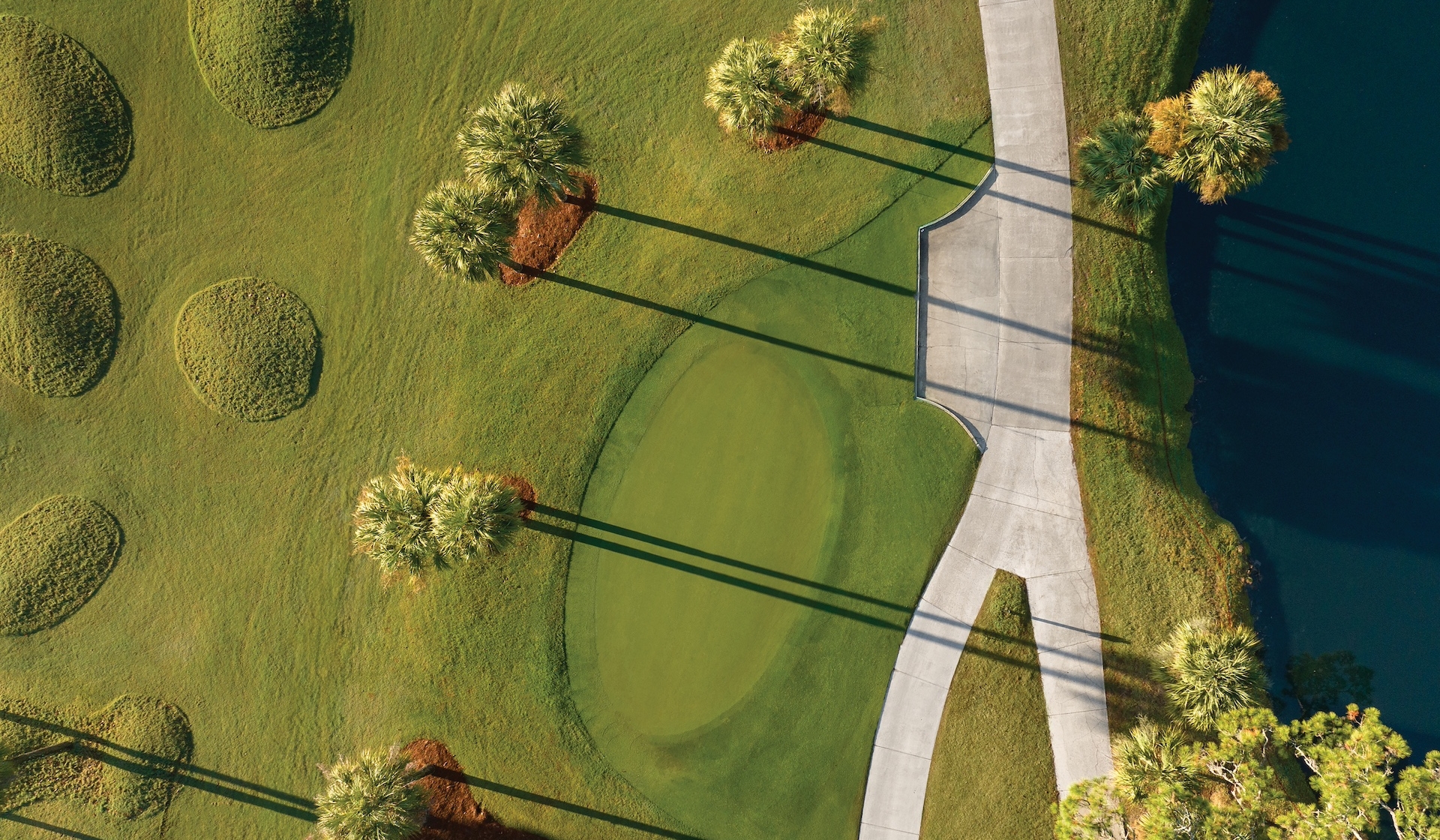On Par With Tradition
A walk through the long-standing traditions that shaped the game of golf
Tradition is a fascinating word, one that encompasses the often inherited or customary patterns that shape our world. Golf, a sport deeply rooted in tradition, exemplifies this concept. As Dottie Pepper, Lead Walking Reporter for CBS Golf, aptly said, “Tradition in golf is an experience so worthwhile it has earned the right to be repeated.” From polishing golf shoes on the front porch with her dad to the grand “Champion Golfer of the Year” ceremony at the Open Championship, traditions are the elements that, as she says, “sets our game apart and glues it together all at the same time.”
One cannot step onto a course or attend a major event without being immersed in the rich history and enduring customs of golf. Whether it’s flipping a tee on the first hole to determine who has honors of teeing off first or watching the previous year’s Masters winner slip the green jacket onto the new champion, golf and tradition are inseparable. The language, etiquette, rules, course design, equipment, institutions and tournaments all contribute to the tapestry of this timeless game.
THE ORIGINS OF GOLF
The origins of the game are shrouded in historical debate. Some trace the beginnings to the Roman game of paganica, played with a bent stick and a small leather ball during the 1st century BC. Others point to China’s chuiwan (ch’ui-wan), invented during the Ming Dynasty (1368-1644), where players hit a ball with a bent stick.
However, the Dutch game of kolf (meaning “with clubs”) is a significant contender, particularly because many traditional golf terms like putt, bunker, tee and stymie have Dutch roots. Despite these claims, the most widely accepted belief is that golf, as we know it, began in Scotland. King James IV’s declaration as the first “golfing monarch” in 1502 cemented the game’s popularity, marking Scotland as the birthplace of golf.
In Scotland, the game evolved with official rules, the creation of the 18-hole format, refined equipment and the formation of golf clubs. St. Andrews, first referenced in 1552, became the historic home of golf.
The 18-hole format, now standard in golf, originated in 1764 at St. Andrews. Originally, courses varied in the number of holes they had, often based on the available land. St. Andrews had 22 holes, with golfers playing 11 holes out and 11 holes back. The course was then reduced to 18 holes to create a more manageable and uniform layout. This 18-hole structure quickly became the norm, as it provided a consistent and challenging round of golf. “The decision to standardize to 18 holes was made to bring uniformity to the game,” says golf historian David Hamilton. “It allowed for a consistent challenge across different courses and set a benchmark for what a full round should entail.”
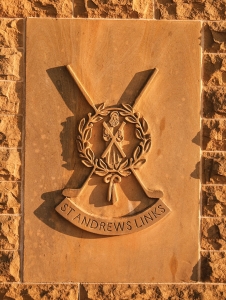

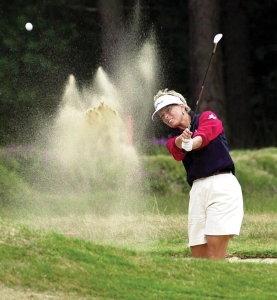
(From left to right) St. Andrews Golf Course stone sign in Scotland; golfers playing on Old Course at St. Andrews; Dottie Pepper plays out of a bunker on the 14th hole at the Women’s Weetabix British Open.(Images provided by St. Andrews)
TALKING THE TALK
Golf’s rich lexicon similarly offers a fascinating glimpse into the sport’s tradition. Before the term “par” was made popular in the late 19th and early 20th centuries, the terminology “bogey” dominated courses. The origin of “bogey” relates to the Bogey Man, a character in a British dancehall song. Around 1890, Charles Wellman exclaimed that the ground score was “a regular Bogey Man,” referring to its lyrics, “I’m the Bogey Man, catch me if you can.” Henceforth, the score was referred to as a bogey, signifying a score of one over par, and is still used today.

The word “tee” is derived from the Scottish “teaz,” meaning a small conical shape. Historically, golfers formed a small mound of sand or soil to place their ball on for the initial shot. The modern wooden golf tee was patented by Dr. George F. Grant, an American dentist, in 1899, but gained popularity when William Lowell marketed the “Reddy Tee” in 1921.
The “gimme” in golf, where a shot is deemed close enough to count without being played, is a tradition rooted in the game’s honor system. Historians suggest that the original rules allowed stroke concessions, but the practice became more formalized over time. The concept of a “gimme” primarily occurs on the putting green, where a shot within a certain distance, often referred to as “inside the leather,” is considered a gimme. “The ‘gimme’ is a perfect example of the trust and respect inherent in golf,” notes Dr. Tony Parker, curator of the World Golf Hall of Fame. “It highlights the unique honor system that underpins the sport.”
Woven Tradition
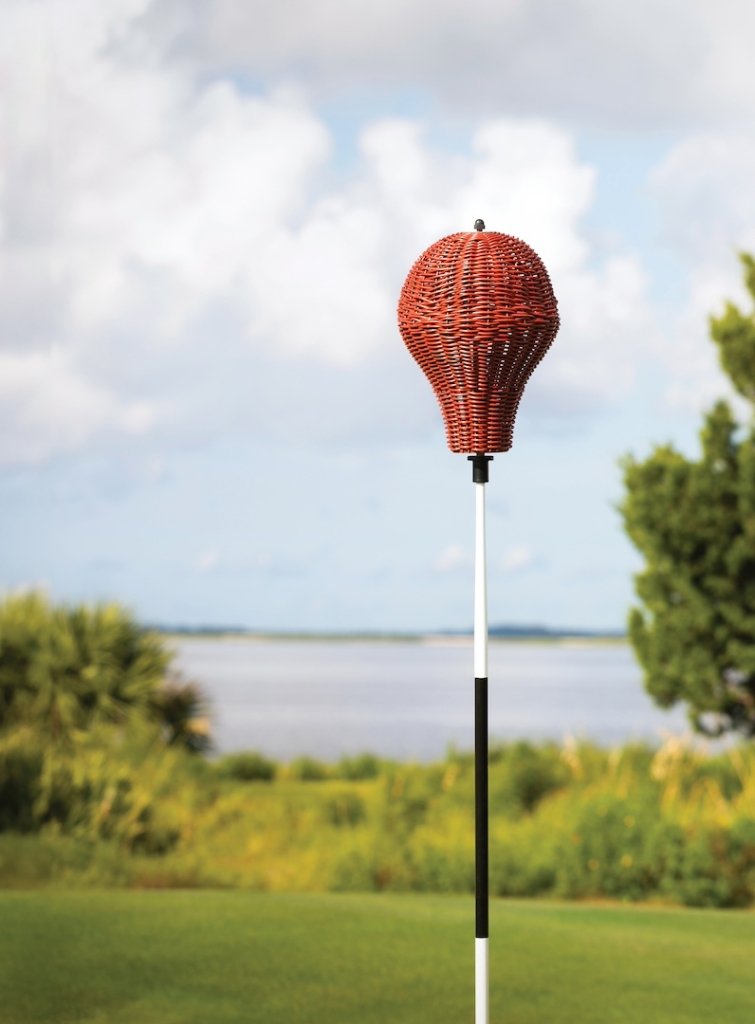 Many courses have their own traditions born and bred of their lore. Sea Island is no different. The resort’s Seaside Course features wicker baskets (right) instead of the traditional flags to mark each hole. This old tradition, reminiscent of early American courses, adds a unique challenge to the game. Unlike flags, wicker baskets do not show the wind’s direction, requiring players to rely more on their skill and intuition. This distinctive feature not only harks back to golf’s storied past but also enhances the experience by keeping the game engaging and unpredictable. The origin of this pin marker is not known, but the most popular tale is that a well known Scottish course architect adopted the look of baskets used on the staffs of shepherds who were trying to keep their lunch out of reach of their flocks.
Many courses have their own traditions born and bred of their lore. Sea Island is no different. The resort’s Seaside Course features wicker baskets (right) instead of the traditional flags to mark each hole. This old tradition, reminiscent of early American courses, adds a unique challenge to the game. Unlike flags, wicker baskets do not show the wind’s direction, requiring players to rely more on their skill and intuition. This distinctive feature not only harks back to golf’s storied past but also enhances the experience by keeping the game engaging and unpredictable. The origin of this pin marker is not known, but the most popular tale is that a well known Scottish course architect adopted the look of baskets used on the staffs of shepherds who were trying to keep their lunch out of reach of their flocks.
Another of the resort’s cherished golf traditions is the nightly performance by a bagpiper (above) at sunset. This enchanting ritual sees the bagpiper serenading the course, creating a tranquil and nostalgic atmosphere as the day draws to a close. The melodies played on the bagpipes are a nod to the sport’s Scottish roots, offering golfers and guests a magical end to their day on the links.
A GAME OF SPORTSMANSHIP
In golf, traditions often highlight the values and integrity that define the game. The simple act of removing hats and shaking hands at the end of a round, rooted in the game’s origins in Scotland, signifies respect and honesty. This gesture fosters camaraderie and trust among players, reinforcing the honorable nature of golf.
Walking the course, a cherished tradition, embodies the spirit of the game. While modern conveniences like golf carts have become popular, many still appreciate the authentic experience of walking, enjoying the landscape and embracing the physical challenge. As Gib Carpenter of Philadelphia Cricket Club puts it, “Golf is a walking sport…a journey where each step connects you more deeply to the course and the game itself.”
Other customs, like buying drinks for everyone at the clubhouse after making a hole-in-one, celebrate achievement and build community. This joyous tradition brings golfers together, sharing in the excitement of a rare accomplishment and reinforcing the sense of camaraderie.
Golf’s traditions imbue the sport with nostalgic elements, fostering a unique bond among players. These traditions are not mere relics of the past but vital elements that continue to shape and define the game. As we look forward to the future of golf, preserving these traditions ensures that the sport remains grounded in the principles of sportsmanship and integrity, creating experiences that are truly timeless. As sportscaster Jim Nantz famously said, “Golf is truly a tradition unlike any other.”
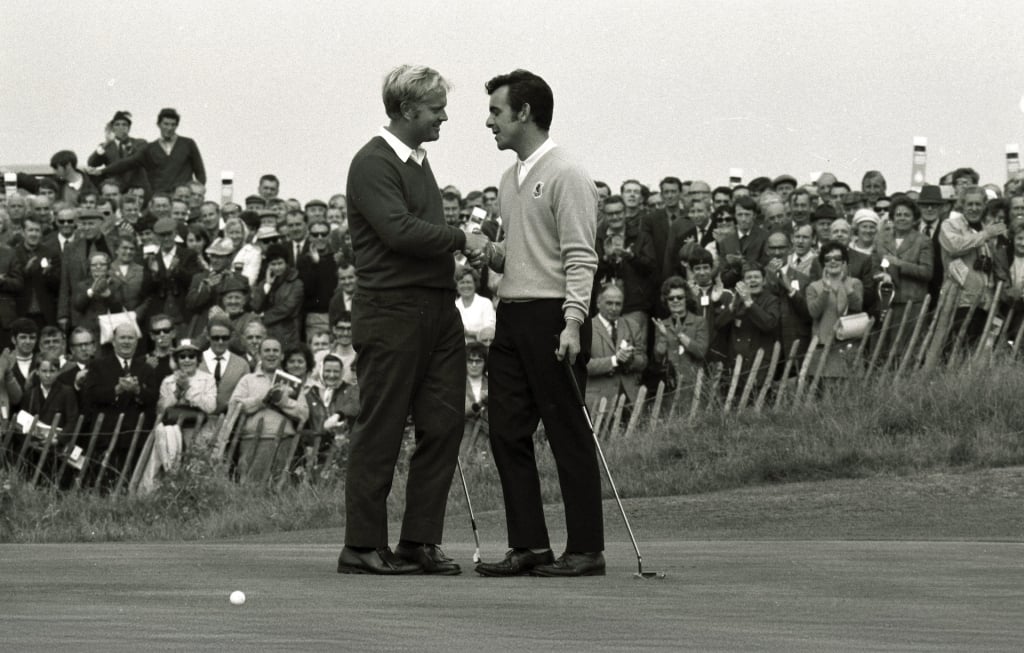
Jack Nicklaus and Tony Jacklin shake hands after finishing their match in a tie at the 1969 Ryder Cup.




